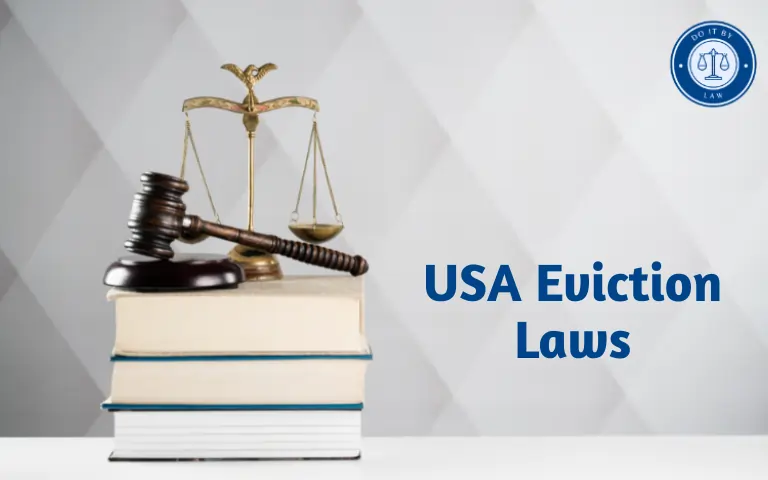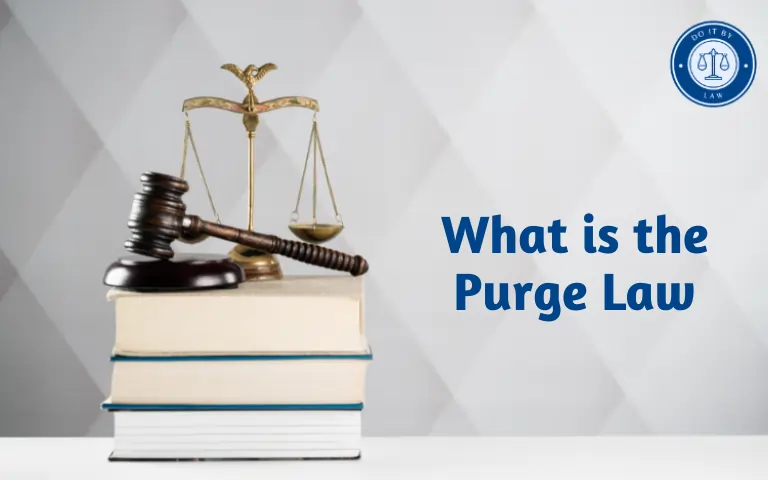Comprehensive Guide to Window Tint Laws 2024 – Stay Legal on the Road
Window tinting can enhance both the function and the style of a vehicle, offering benefits such as protection from harmful UV rays and added privacy. However, navigating the patchwork of window tint laws across the USA can be as complex as it is critical.
Each state has its own set of regulations, often defined by the percentage of Visible Light Transmission (VLT) allowed. This blog post delves into the intricacies of these laws, providing a clear guide to help you stay compliant and avoid costly penalties.
Overview of window tinting
Window tinting is the process of applying a thin film to the glass surfaces of windows, primarily in vehicles and buildings, to reduce the transmission of light. Here’s an overview of window tinting:

- Purpose: The primary reasons for window tinting are to reduce glare, enhance privacy, and improve the aesthetic appeal of a vehicle or building. It also helps to block UV radiation, which can cause skin damage and fade interior materials.
- Materials: The films used for tinting are usually made of polyester for its durability and clarity. They can be infused with dyes, metals, or ceramics to achieve different levels of tint and heat rejection
- Benefits:
- Heat Reduction: Tinting can significantly reduce the heat buildup inside a car or building, improving comfort and reducing the need for air conditioning.
- UV Protection: It can block up to 99% of harmful UV rays, protecting passengers and preventing the interior from fading.
- Safety: In the event of an accident, tinted film can help hold shattered glass together, reducing the risk of injury.
- Types of Tint:
- Dyed Window Tint: Offers non-reflective, black tinting that blocks light and heat through layers of dye.
- Metalized Window Tint: Uses tiny metallic particles to reflect heat and darken the window.
- Hybrid Tint: Combines dyes and metals to provide moderate heat rejection with less electronic interference.
- Ceramic Tint: Utilizes ceramic particles to provide high levels of heat and UV rejection without affecting electronic signals.
- Carbon Tint: Contains carbon particles that block infrared light for superior heat reduction.
- Regulations: Window tinting is subject to legal regulations that vary by location. These laws dictate the permissible Visible Light Transmission (VLT%) levels for different windows on a vehicle.
- Installation: It can be a DIY project or done professionally. Professional installation ensures precision, warranty, and compliance with local laws.
If you’re considering window tinting for your vehicle or building, it’s essential to understand the local laws and choose the right type of tint to meet your needs and preferences.
Understanding Window Tint Laws
Window tint laws in the USA are determined by each state and can vary significantly. Here’s a brief overview of what these laws generally regulate:
- Visible Light Transmission (VLT%): This is the percentage of light that’s allowed through your car windows. The lower the VLT%, the darker the tint.
- Front Side Windows: States have specific VLT% requirements for the driver and passenger side windows.
- Back Side Windows: The requirements for the rear side windows can be different from the front side windows.
- Rear Window: This is the window at the back of the car, and it also has its VLT% requirements.
- Windshield: Most states allow only the top few inches of the windshield to be tinted.
- Reflectivity: Some states have restrictions on how reflective your window tint can be.
- Other Restrictions: There may be additional rules regarding the colors of tint or other characteristics.
For example, in California, the front side windows must allow more than 70% of light in (VLT%), while for the back side windows and rear window, any darkness can be used as long as you have dual side mirrors. The windshield can only have non-reflective tint on the top 4 inches.
It’s important to check the specific regulations for your state as they can change and may have certain exemptions, for instance, for medical reasons. For the most accurate and up-to-date information, you should consult your local DMV or law enforcement agency. If you need detailed information for a specific state, I can look that up for you!
Importance of knowing Window Tint Laws
Understanding and adhering to window tint laws is crucial for several reasons:

- Legal Compliance: First and foremost, knowing the laws helps to ensure that you are not in violation of any regulations, which can result in fines or even the removal of the tint by authorities.
- Safety: Properly applied window tints can reduce glare and improve visibility, but overly dark tints can impair a driver’s vision, especially at night or in low-light conditions, increasing the risk of accidents.
- Law Enforcement: Tint laws are also in place to allow law enforcement to see inside a vehicle during traffic stops or at checkpoints for the safety of police officers.
- Resale Value: Vehicles that comply with tint laws are easier to sell, as they don’t require additional work to bring them up to legal standards.
- Insurance: Some insurance companies may not cover damages or may increase premiums if the vehicle has illegal modifications, including window tint that doesn’t comply with state laws.
- Health Reasons: While window tints can block harmful UV rays, illegal tints may block too much light, potentially affecting individuals with conditions that require a certain level of sunlight.
Knowing the specific window tint laws in your area can save you from legal troubles and potential safety hazards. It’s always best to consult with a professional or your local Department of Motor Vehicles for the most current and applicable regulations. Remember, these laws are in place for the protection and benefit of everyone on the road.
State-by-State VLT requirements
Window tint laws vary by state in the United States. Some states have more permissive tint laws, while others have stricter regulations. Here is a state-by-state breakdown of window tint laws in the USA:
- Alabama: 32% VLT for front side windows, 32% VLT for back side windows, 6 inches for windshield tinting, no more than 20% reflective, and no metallic or mirrored tinting.
- Alaska: 70% VLT for front side windows, 40% VLT for back side windows, 5 inches for windshield tinting, no more than 35% reflective, and no red, yellow, or amber tinting allowed.
- Arizona: 33% VLT for front side windows, any VLT for back side windows, and tinting allowed to the top of the manufacturer’s as-1 line.
- Arkansas: 25% VLT for front side windows, 25% VLT for back side windows, 10% VLT for windshield tinting, no metallic or mirrored tinting, and no more than 20% reflective.
- California: 70% VLT for front side windows, any VLT for back side windows, and no more than 4 inches from the top of the window.
- Colorado: 27% VLT for front side windows, 27% VLT for back side windows, 4 inches for windshield tinting, no metallic or mirrored tinting, and red and amber not permitted for back window tinting.
- Connecticut: 35% VLT for front side windows, 35% VLT for back side windows, and non-reflective tint above the as-1 line.
- Delaware: 70% VLT for front side windows, any VLT for back side windows, and non-reflective tint above the as-1 line.
- Florida: 28% VLT for front side windows, 15% VLT for the rear half of the vehicle, 28% VLT for the front windshield to the AS-1 line, and no more than 35% reflective.
- Georgia: 32% VLT for front side windows, 32% VLT for back side windows, 6 inches for windshield tinting, no more than 20% reflective, and red, amber, and blue are not allowed for back window tinting.
- Hawaii: 35% VLT for front side windows, 35% VLT for back side windows, no inch requirement, and must allow 70% light.
- Idaho: 35% VLT for front side windows, 20% VLT for back side windows, 35% VLT for windshield tinting, and tinting allowed to the top of the manufacturer’s as-1 line.
- Illinois: 35% VLT for front side windows, 35% VLT for back side windows, 6 inches for windshield tinting, and must be non-reflective.
- Iowa: 70% VLT for front side windows, any VLT for back side windows, and tinting allowed to the top of the manufacturer’s as-1 line.
- Kansas: 35% VLT for front side windows, 35% VLT for back side windows, 5 inches for windshield tinting, no metallic or mirrored tinting, red, amber, and yellow are prohibited, and dual side mirrors are required for back tinted windows.
- Kentucky: 35% VLT for front side windows, 18% VLT for back side windows, 5 inches for windshield tinting, no more than 25% reflective, and no metallic or mirrored tinting.
- Louisiana: 40% VLT for front side windows, 25% VLT for back side windows, 12% VLT for windshield tinting, no more than 20% reflective, and no metallic or mirrored tinting.
- Maine: 35% VLT for front side windows, any VLT for back side windows, 4 inches for windshield tinting, must be non-reflective, and dual side mirrors required for back tinted windows.
- Maryland: 35% VLT for front side windows, 35% VLT for back side windows, 5 inches for windshield tinting, no law for reflective tinting, and no metallic or mirrored tinting.
- Massachusetts: 35% VLT for front side windows, 35% VLT for back side windows, 6 inches for windshield tinting, and no more than 4 inches from the top of the window.
- Michigan: Any percent for front side windows, but only 4 inches from the top of the window, any VLT for back side windows, and 4 inches for windshield tinting.
- Minnesota: 50% VLT for front side windows, 50% VLT for back side windows, no allowance for windshield tinting, and no more than 50% reflective.
- Mississippi: 28% VLT for front side windows, 28% VLT for back side windows, 5 inches or as-1 line for windshield tinting, no more than 20% reflective, and no metallic or mirrored tinting.
- Missouri: 35% VLT for front side windows, any VLT for back side windows, 5 inches for windshield tinting, no more than 4 inches from the top of the window, and no metallic or mirrored tinting.
- Montana: 24% VLT for front side windows, 14% VLT for back side windows, 5 inches for windshield tinting, no metallic or mirrored tinting, and no more than 20% reflective
- Nebraska: Cars in Nebraska may have a window tint on the front side windows that allows at least 35% or more of the sun’s visible light into the car.
- Nevada: Nevada window tint laws permit a certain window reflection when using a tint, and there are additional car window tinting rules and regulations in Nevada.
- New Hampshire: New Hampshire does not have specific window tint laws mentioned in the provided search results.
- New Jersey: New Jersey is fairly strict about window tint, and the VLT permissible varies by vehicle and window position.
- New Mexico: New Mexico allows window tinting for medical purposes, and there are additional laws regarding window tinting in the state.
Please note that these are the general window tint laws for these states, and it is essential to check with your local DMV or law enforcement authorities for any additional regulations or updates.
Medical Exemptions and Window Tint
Medical exemptions for window tint are available in many states for individuals who have medical conditions that require protection from sunlight. These exemptions allow for window tints that are darker than the standard legal limits. Here’s what you need to know about obtaining a medical exemption for window tint:

- Eligibility: Medical conditions that typically qualify for an exemption include, but are not limited to, Systemic Lupus Erythematosus (SLE), certain types of porphyria, and other conditions that result in severe sensitivity to UV rays.
- Application Process: To apply for a medical exemption, you will generally need a signed statement from a licensed physician or optometrist. The statement must attest to the medical necessity for darker window tint due to a specific condition.
- Exemption Details: The specifics of the exemption, such as the allowed percentage of Visible Light Transmission (VLT) and any other requirements, vary by state. Some states may require the vehicle to display a decal with a unique identification number.
- Validity: The duration of the exemption also varies, with some states requiring annual renewal, while others may grant exemptions that last for multiple years.
- Restrictions: It’s important to note that some states do not permit darker window tints even for medical reasons, so it’s essential to check the regulations in your specific state.
For example, in California, a licensed physician, surgeon, dermatologist, or optometrist can issue a signed letter stating that a person needs to be shielded from the sun due to a medical condition. Only clear, colorless, and transparent film may be applied, and it must be removable.
If you or someone you know requires a medical exemption for window tint, it’s crucial to follow the proper channels and obtain the necessary documentation to ensure compliance with state laws. Always consult with a healthcare provider and check with your local Department of Motor Vehicles or equivalent authority for the most accurate and up-to-date information.
Penalties for Non-Compliance
Window tint laws vary significantly across the United States, so the penalties for non-compliance can differ depending on your location. Here’s a breakdown of what to expect:
- Fines: A first offense typically results in a warning or a “fix-it” ticket with a nominal fine (around $25-$50). Subsequent offenses can lead to steeper fines ranging from $100 to $500 or more.
- Additional Penalties: In some states, you might face points added to your driver’s license or even court appearances for severe violations.
- Tint Removal: Most states will require you to remove the non-compliant tint to avoid further penalties. You might incur additional fees for verification of tint removal.
Here are some resources to help you find the specific regulations for your state:
- State Department of Motor Vehicles (DMV) websites usually have a dedicated section on window tinting laws.
- The National Highway Traffic Safety Administration (NHTSA) website provides an overview of window tint laws by state.
Remember, staying informed and compliant with window tint laws can save you from unnecessary trouble and expense.
Latest Law Updates
There aren’t typically frequent updates to window tint laws on a national level in the USA. However, individual states can occasionally revise their regulations.
Here’s how you can find the most recent information:
- State Department of Motor Vehicles (DMV) websites: These are the most reliable sources for up-to-date window tint laws in your state. They usually have a dedicated section outlining the regulations.
- Window Tint Law Resource Websites: Several websites compile and update information on window tint laws by state. Some reputable options include:
Keep in mind: Even though these websites update frequently, it’s always a good practice to double-check with your state’s DMV website for the most current information.






